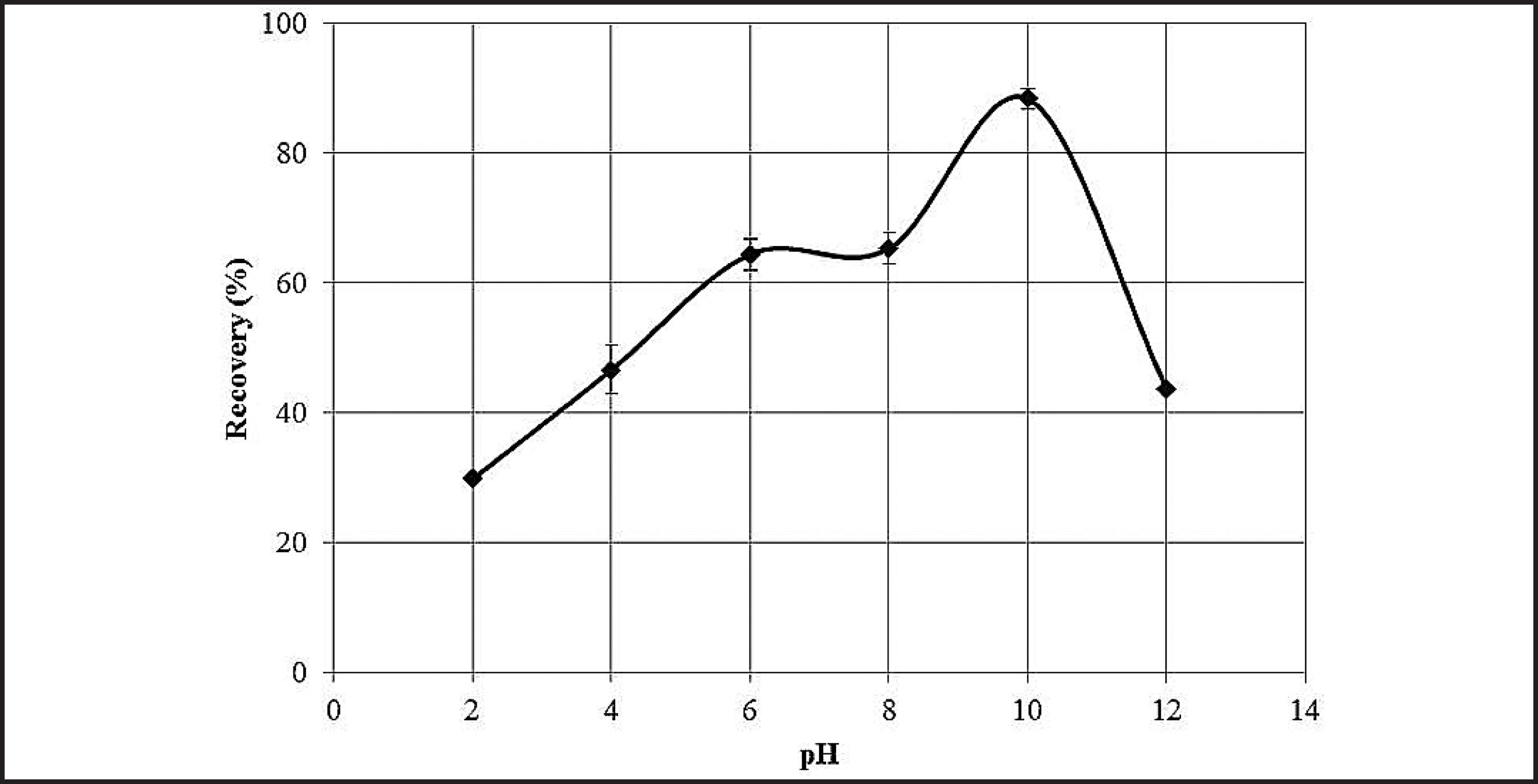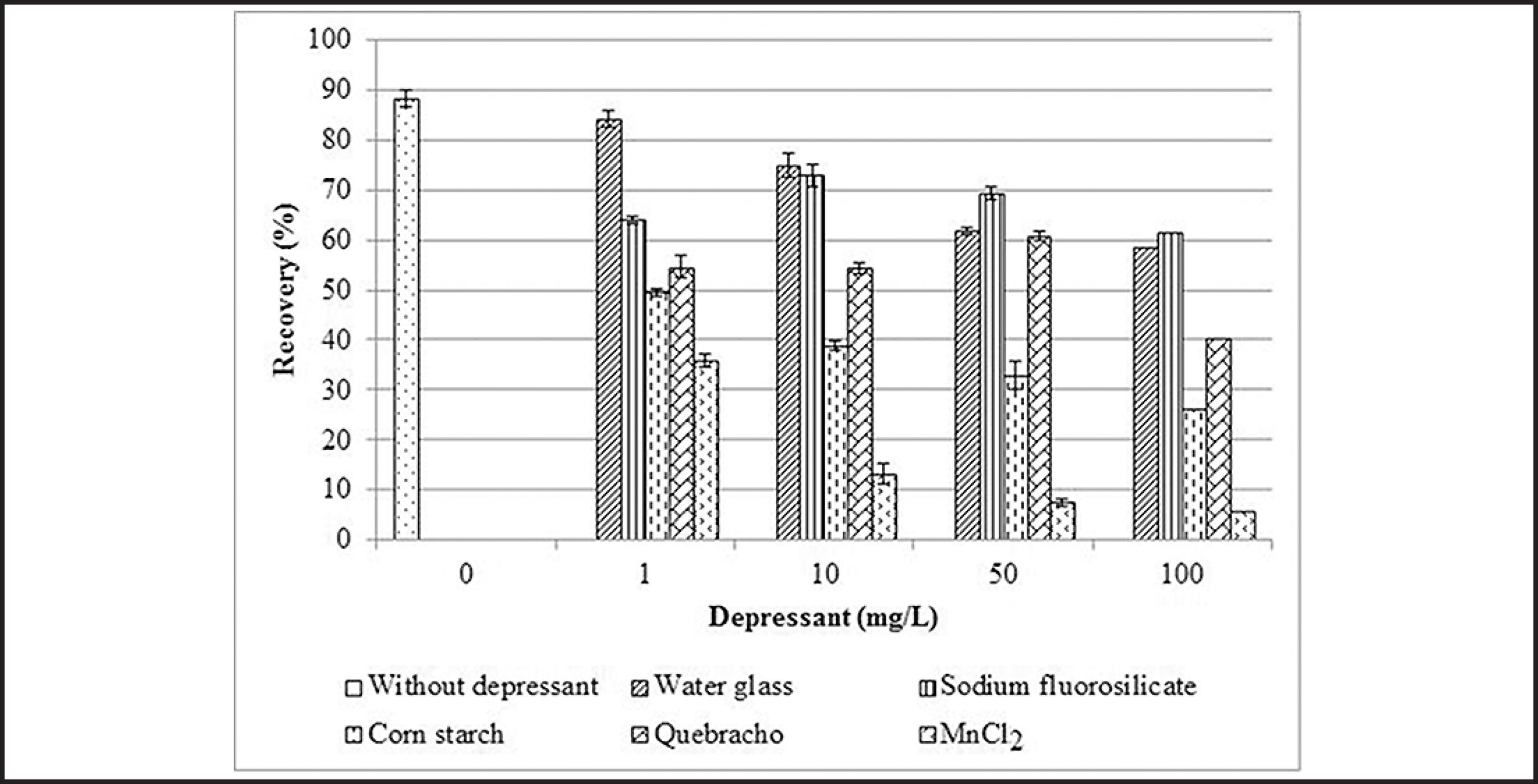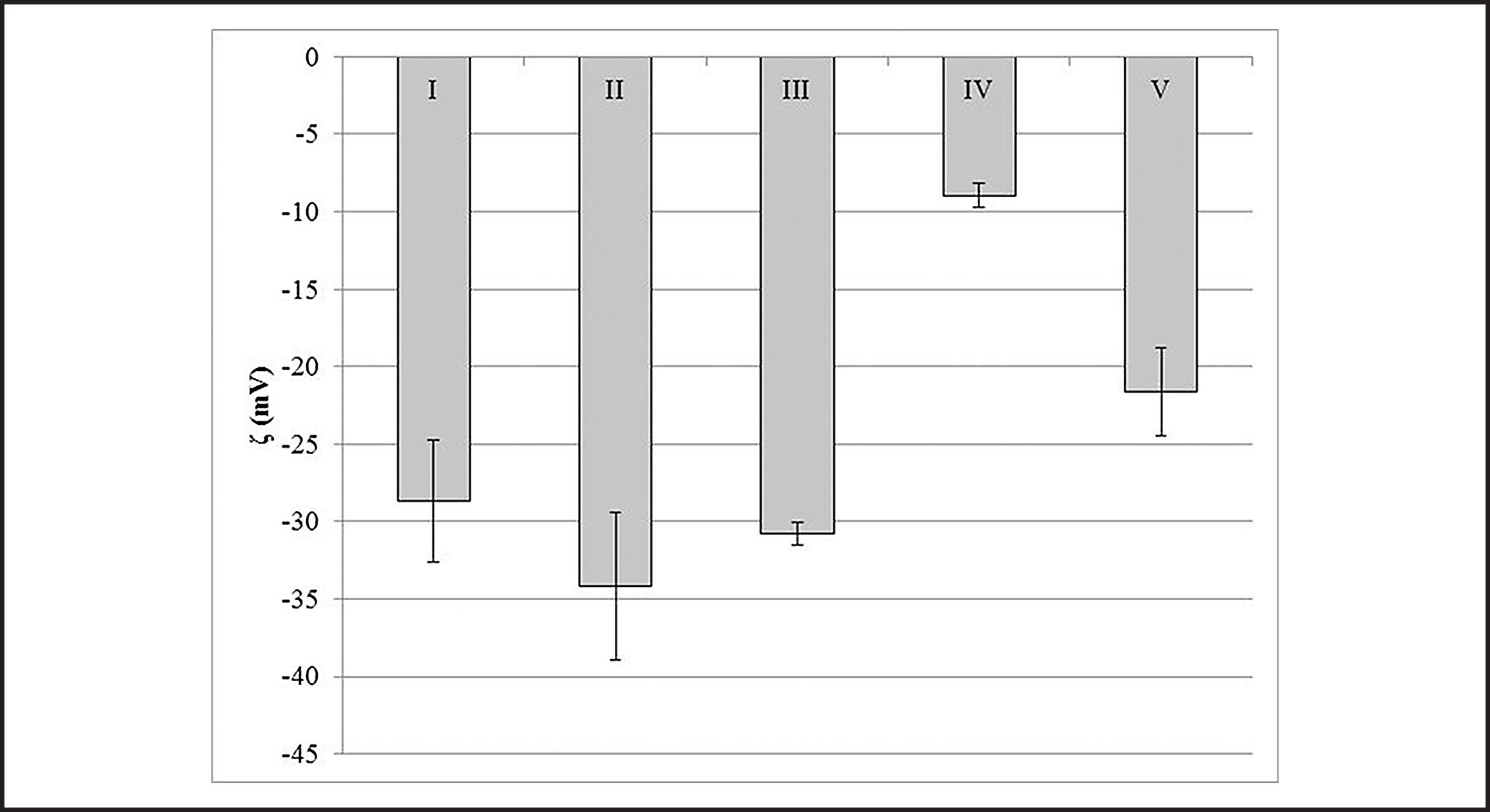Abstract
Silicates (rhodonite, tephroite, spessartine) and the carbonate (rhodochrosite) of manganese are of economic interest in silicate-carbonated manganese ores. The recovery of both mineral classes by flotation constitutes a challenge; rhodochrosite is a slightly soluble mineral that can release Mn2+ ions in pulp. In this work, the effects of inorganic and organic depressants on the cationic flotation at pH 10 with ether amine acetate and the surface charges of rhodonite and rhodochrosite have been investigated. For rhodonite, the influence of Mn2+ species on its recovery and surface charge at the conditions of maximum yield with amine has also been investigated. The organic depressants, especially the corn starch, were more effective depressants for both minerals. The poor recovery of rhodonite conditioned with MnCl2 is probably related to the colloidal Mn(OH)2 deposition on mineral surface. The increase in the rhodochrosite recovery with increasing water glass content is probably related to its negative value of species adsorbed on the mineral surface, since the rhodochrosite zeta potential, conditioned with this reagent, becomes more negative compared with the mineral without reagent, which attracts the ether ammonium.
Keywords:
Rhodonite; rhodochrosite; cationic flotation; inorganic and organic depressants; manganese ions










